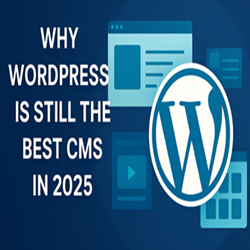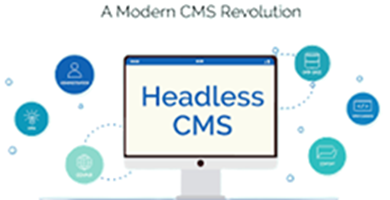In a rapidly evolving digital landscape filled with new platforms and flashy content management systems (CMS), one name continues to dominate the conversation in 2025: WordPress. Despite being over two decades old, WordPress remains the most popular and versatile CMS in the world—and for good reason. Whether you’re a blogger, a business owner, or a developer, WordPress continues to deliver unmatched value, scalability, and control.
Here’s why WordPress is still the best CMS in 2025:
1. Massive Market Share and Community Support
As of 2025, WordPress powers over 40% of all websites on the internet. This staggering figure isn’t just a vanity metric—it reflects the platform’s reliability and adaptability.
-
A global community of developers, designers, and content creators contributes to its ecosystem.
-
Thousands of forums, tutorials, and documentation resources are available for troubleshooting and learning.
-
An active user base means rapid updates, bug fixes, and security patches.
2. Unmatched Flexibility and Customization
From simple blogs to complex eCommerce sites and enterprise-level platforms, WordPress can handle it all.
-
55,000+ plugins make it easy to add features like SEO optimization, forms, analytics, social integration, and more.
-
Thousands of themes—both free and premium—allow for full design control.
-
Custom post types, taxonomies, and advanced field plugins (like ACF) give developers fine-grained control over content structure.
3. User-Friendly Interface
Not everyone is a tech expert—and WordPress gets that.
-
The block editor (Gutenberg) has matured significantly in 2025, offering a smooth, drag-and-drop experience.
-
Non-technical users can now build beautiful pages without touching a line of code.
-
Site owners can manage media, schedule posts, and update content from a clean, intuitive dashboard.
4. Strong SEO Capabilities
Search engine visibility is critical in 2025, and WordPress continues to lead in SEO-friendliness.
-
SEO plugins like Yoast SEO and Rank Math help optimize content, meta tags, and site structure.
-
WordPress’s clean code and fast loading times support better search engine rankings.
-
Integration with tools like Google Analytics and Search Console is seamless.
5. Headless Capabilities and Modern Development
WordPress has embraced modern web development trends, making it appealing to developers in 2025.
-
Use WordPress as a headless CMS with a REST API or GraphQL for decoupled frontends.
-
Integrate with React, Vue, or other JavaScript frameworks while keeping the powerful WordPress backend.
-
Compatibility with containerization (Docker), CI/CD pipelines, and version control via Git.
6. Cost-Effective and Open Source
In a world where proprietary platforms often come with hefty price tags, WordPress’s open-source nature is a huge advantage.
-
It’s free to use, with many affordable hosting providers available.
-
You own your content and your code—no vendor lock-in.
-
Ideal for startups, non-profits, and businesses looking to minimize expenses without compromising quality.
7. Security and Scalability
Security has been a major focus for WordPress in recent years.
-
Regular core updates and a large library of vetted plugins enhance security.
-
Managed WordPress hosting providers offer built-in security features and firewalls.
-
Scales effortlessly—from a few visitors a day to millions per month—with the right infrastructure.
8. eCommerce Power with WooCommerce
When it comes to eCommerce, WooCommerce is the most popular WordPress plugin and one of the leading platforms globally.
-
Full control over your store, from products to checkout to customer data.
-
Thousands of extensions and themes for personalization.
-
No transaction fees or limitations compared to proprietary eCommerce platforms.
Conclusion: WordPress Isn’t Just Surviving—It’s Thriving
In 2025, WordPress isn’t just a legacy CMS—it’s a continually evolving platform that meets the needs of modern websites. Its open ecosystem, community-driven development, and adaptability ensure that it remains at the top of the CMS world.
Whether you’re building your first site or scaling a global business, WordPress offers the perfect blend of power, simplicity, and freedom. That’s why, even in 2025, WordPress is still the best CMS—and likely will be for years to come.
Ready to build with WordPress? Explore themes, plugins, and expert resources today to create a site that truly stands out.Connect with Best WordPress Developer India.


